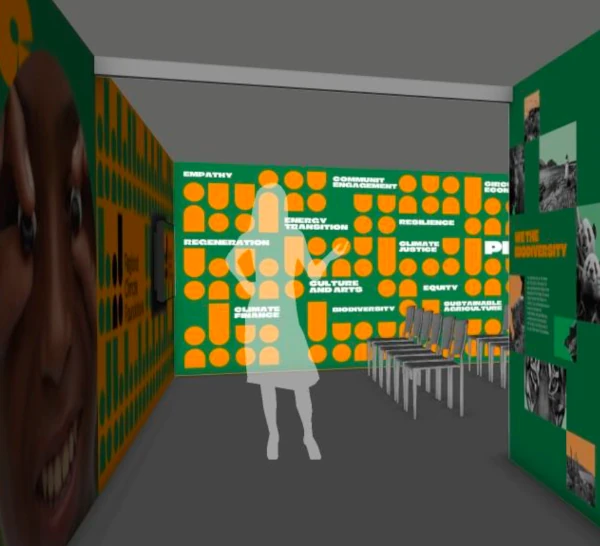The Regional Climate Foundations Pavilion will not only be a place for high-level debates and meetings in the COP 29 Blue Zone, but also a cultural space. “COP participants are people with a considerable background, they know the science behind the fight against climate change. So we will use poetry to connect with their emotions, with the need to persist in building a better planet”, says Eduardo Carvalho, the pavilion’s curator.
In this sense, the exhibition “Building Hope” will be the main way to achieve this goal. Consisting of three large walls full of images and text messages representing the Earth’s biodiversity and the human role in the just transition, it will be open to the public during all the days of COP 29 in the RCF Pavilion.
The first moment of the exhibition “We the Biodiversity” will show images of ecosystems and native species from different parts of the world, such as Brazil, China, Indonesia, Mexico, and India. The idea, according to the curator, is to highlight the links between humans and nature.
The second moment, “We the peoples”, shows a wall full of different faces from all over the world — people who live in the forest, in the desert, in urban areas. This wall aims to reflect the different cultural and historical backgrounds of humanity that can lead to solutions to climate change.
“We the Future” is the final act of the exhibition, an interactive moment. On this wall, participants are invited to leave a message to their future selves, asking what they have done in their lives to change reality. “We want to encourage people to fight for a better life, for an adapted world that is safe for everyone”, says Carvalho.
The reflection of the participants will also be stimulated by hidden sentences that invite them to think about solutions to the climate crisis that can be achieved with action.
“The idea of this exhibition is to give a breath of fresh air to all COP’ participants, to remind them that they are not negotiating and fighting for an individual reason, but for a collective one. It is for all of us. Without hope, we won’t find good solutions to climate change”, concludes the curator.
Mapping artistic projects on climate change
The pavilion programme also includes a cultural debate to link art and the challenge of climate change. A report on the status of cultural projects related to climate change will be launched on November 15.
A team of Brazilian researchers from Outra Onda Contedo and C de Cultura organizations looked at public policies in different countries around the world. The idea was to map which of them includes arts and culture projects that could promote solutions to climate change.
“Culture is an important way to engage people through their emotions, but unfortunately, there aren’t many public policies designed for this”, says Eduardo Carvalho.

